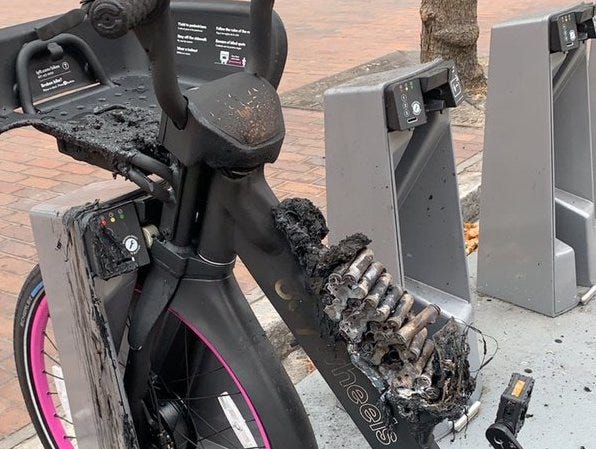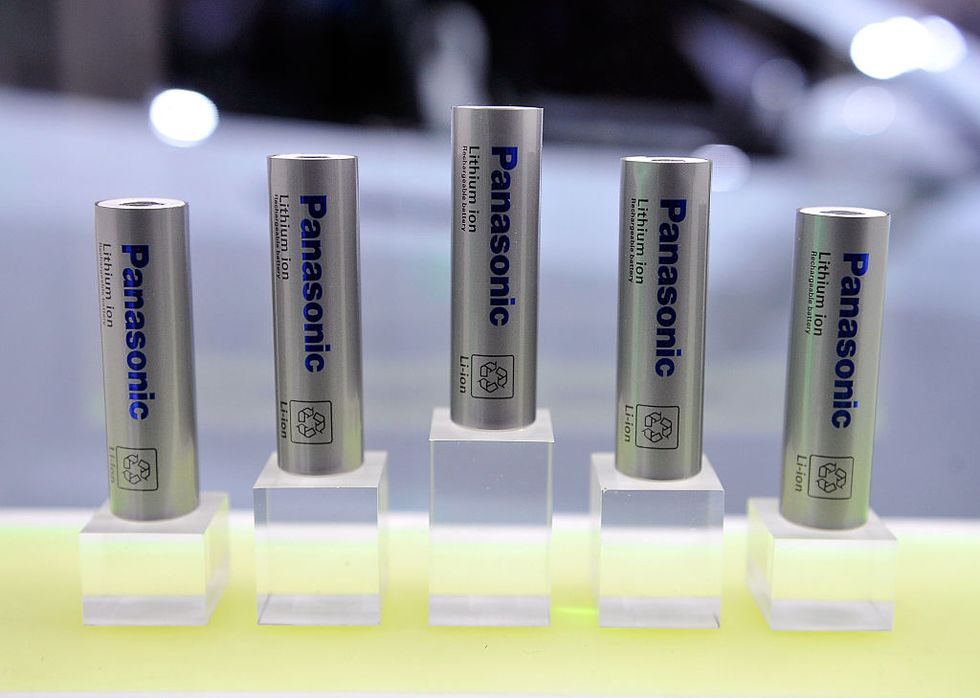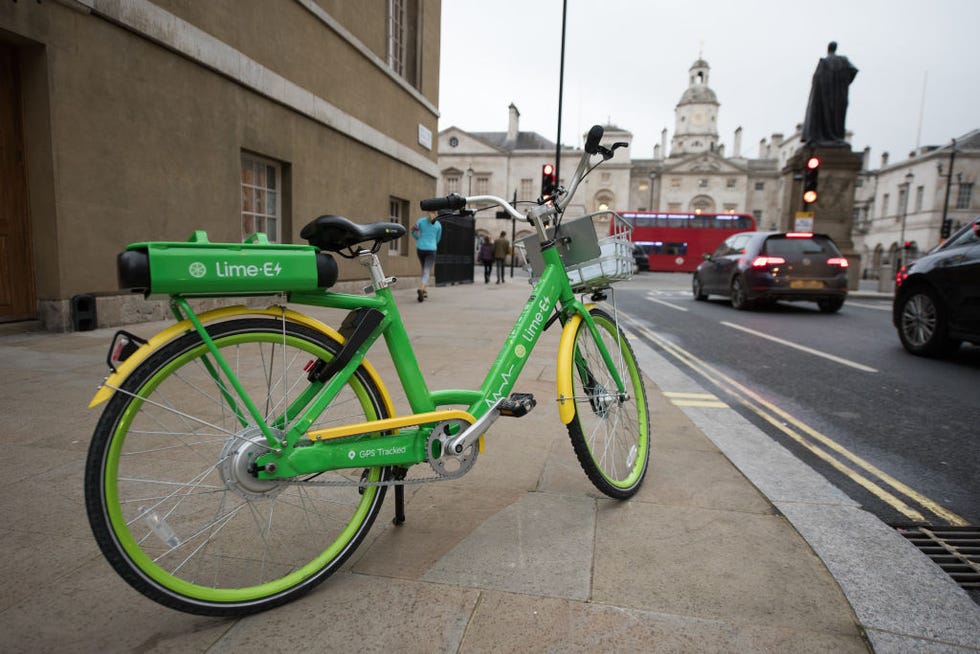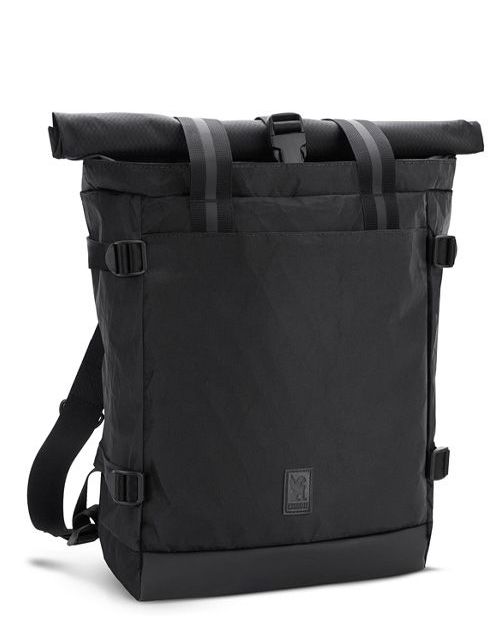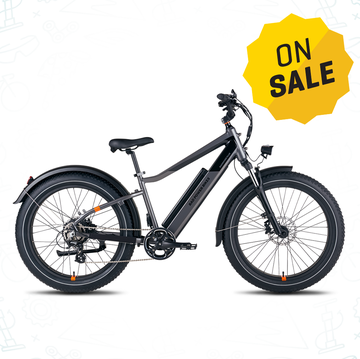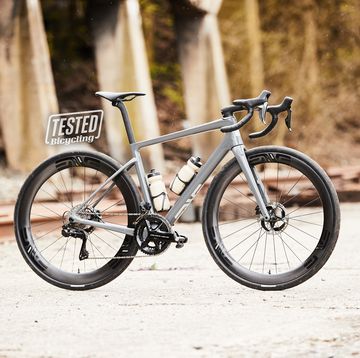If electric bikeshares have proven anything lately, it’s that we can’t have nice things—not without those nice things apparently setting themselves on fire. On Wednesday, August 14, a battery pack caught fire in Lime’s Seattle warehouse, setting ablaze nearby battery packs in a container room. The same night, a Lime-E dockless e-bike burned on the University of Washington campus. A Reddit user captured the fiery display.
Lime currently has 4,500 dockless e-bikes in the Seattle area. The cause of the warehouse battery fire has yet to be determined, a Lime spokesperson told Bicycling, but a company analysis of the UW fire found that the bike’s battery pack had been vandalized. (A University of Washington police officer told Crosscut that there were no initial signs of foul play, and no incident report was filed.)
Lime isn’t the only bikeshare to see its e-bikes go up in flames. In July, three days after Lyft activated its new Bay Wheels hybrid e-bikes for use around San Francisco and the Bay Area, one of the proprietary bikes caught fire at a bike rack on the University of California, Berkeley campus. The following Saturday, Twitter user Zach Rutta captured a photo of a burnt Lyft bike at a dock in downtown San Francisco. A third bike burned in San Jose on Tuesday, July 30, then a fourth, in San Francisco’s Lower Haight neighborhood, the next day.
San Francisco’s Municipal Transportation Agency issued permits for up to 1,900 of Lyft’s hybrid e-bikes to begin use on July 19. (Following a Bicycling inquiry, Lyft spokesperson Julie Wood did not confirm the number of operational hybrid e-bikes.)
The day the fourth bike burned, Lyft announced it was suspending e-bike service until it could investigate its battery technology. The Lyft bike in San Jose was deliberately torched as an act of vandalism, San Jose Department of Transportation PIO Colin Heyne told Bicycling, but the cause of the other three fires remains unknown.
E-bike fires make headlines for the same reason as cell phone fires, Tesla infernos, and self-immolating hoverboards: We don’t expect the batteries that power our modern lives to turn on us. But although lithium-ion battery fires end in an explosive chemical reaction that leaves little but a charred husk of a battery pack, they begin with a distinct and often preventable cause. What follows is an explanation of how and why e-bikes burn up, with safety information to prevent an e-bike fire from happening to you.
Why Lithium-Ion Batteries Catch Fire
The conditions that preempt an e-bike fire vary: Charging fires appear to be most common, although plenty of documented e-bike fires occur while bikes sit idle. Few seem to occur mid-ride, and in those instances that we could find, riders had previously modified e-bikes or retrofitted pushbikes with conversion kits. In January, a modified Pinarello Dogma F8 ignited mid-ride as a 79-year-old rider pedaled up a popular climb in Adelaide, Australia; a Pinarello representative blamed the apparent short-circuit on the rider’s aftermarket e-bike kit in a statement to Forbes.
What all battery fires share is a fiery phenomenon called thermal runaway, in which the battery’s cells reach a critical temperature that causes them to spontaneously combust.
→ No matter what you need to improve in your riding life, find it with Bicycling All Access!
Most e-bike batteries use a series of cells containing lithium ions, the use of which enables a much higher energy density (more power, less weight) than nickel-cadmium and lead-acid batteries, like you’ll find in your car’s battery. “You’re putting an awful lot of energy in [a lithium-ion] battery,” says Ed Benjamin, founder and chairman of the Light Electric Vehicle Association. “I’ve got a battery about the size of a cigar box, and there’s enough energy in there to push my 100 kilos plus another 100 kilos for 60 miles.” The lithium-ion trade-off is volatility: Metallic (pure) lithium will ignite when exposed to water in the air. Lithium-ion batteries employ lithium compounds that store less energy than pure lithium, but also make the cells more stable.
The shape of the cells also matters. E-bike battery packs are manufactured with cylindrical, prismatic, or pouch-shaped cells. Reputable e-bike brands use packs with cylindrical cells from quality suppliers such as Samsung, Panasonic, and Lishen, because cylindrical cells tend to handle higher temperatures without deforming.
Cells that deform or leak can cause a short circuit and subsequent buildup of heat that risks thermal runaway. Prismatic cells, commonly used in cell phones, are flatter in shape and can be more prone to swelling. Pouch cells are also subject to swelling over their life cycle and often aren’t as rigorously tested as other shapes. “By itself, a pouch cell isn’t bad, but a pouch cell from a cheap-battery maker is scary,” Benjamin says.
A battery should cost roughly half as much as a complete e-bike, Benjamin says, so buying a cheap battery from an unknown supplier means you might not get cylindrical cells—a stable design that’s also costly to manufacture and properly test.
However, if any type of battery cell is damaged by a drop or a crash, punctured, or otherwise messed with (as could be the case of bikeshare e-bikes), the separators between the cells can fail, causing a short circuit. Cells can also overheat from overcharging, and a 2018 study found that an unintended crossover of chemicals between a battery’s cathode and anode can lead to a catastrophic heat release without any internal short-circuiting. Gas release vents within the cells serve as a last line of defense for dissipating heat before the cells reach their critical temperature.
In all of these cases, thermal runaway can occur when a cell reaches a critical temperature and begins releasing oxygen, which leads to ignition and a self-sustaining fire. Once one cell burns, the adjacent cells can ignite or explode and the reaction continues until the fire runs out of fuel. A Youtube video uploaded last August shows an e-bike in thermal runaway on the streets of Rome, its battery ablaze and the individual cells popping and crackling as they ignite in succession.
Odds of a Fire
There’s no unified figure for the number of e-bike fires that occur each year. Using data from the China Bicycle Association and Bike Europe, Benjamin estimates there are approximately 265 million e-bikes being ridden in China, about 10 million in Europe, and at least 1 million in the U.S.
Universal and reliable fire data doesn’t exist, but you can search the Internet for detailed (and frightening) stories. Not including the July Lyft fires, we counted about 10 battery fires in the U.S. since 2016: A brand new beach cruiser burst into flames following a ride on California’s Newport Beach, shooting chunks of battery into the air as it burned.
A delivery bike torched a Yonkers, New York, apartment while charging, the NYFD posited. An overheated battery burned an apartment on San Francisco’s Folsom Street, the same street that claimed a Lyft bike. Citi Bike’s own Brooklyn facility has had multiple fires, and Lime’s Seattle warehouse saw a battery fire in mid-August when a single battery pack caught fire and ignited nearby packs. And in Madison, Wisconsin, Crazy Lenny’s E-Bikes sustained an estimated $350,000 in damage after an early morning charger fire.
Likely more fires occur overseas in Europe and Asia where e-bikes and other light electric vehicles are more common. In the Netherlands, e-bike brand Stella had three warehouse and showroom fires in a seven-month span. Singapore’s Straits Times reports the country saw 74 e-bike and scooter fires in 2018, up from 49 cases the previous year.
With more than 200 million registered e-bikes, the country with the most battery fires is China. A May 2018 report by the country’s Ministry of Emergency Management stated that more than 10,000 e-bike fires occurred between 2013 and 2017, killing over 200 people. Many deaths covered by Chinese media reports were charger fires that spread through apartment complexes, prompting proposals for designated e-bike charging zones in residential areas.
What Happened to the Lime and Lyft Bikes?
A Lime spokesperson told Bicycling that the company inspected the burnt UW bike later that night and found damage to the metal and plastic used to protect the battery pack, an indication that it had been vandalized. When another Lime e-bike caught fire and burned a rider’s leg in Queens last summer, the company similarly attributed the incident to vandalism.
Lyft hasn’t released any information on the cause of its fires. Spokesperson Julie Wood stated that the company is looking into vandalism; there’s a documented history of vandalism against bikeshares and electric scooters in the Bay Area. As for the UC-Berkeley Lyft bike fire, UCPD spokesperson Sgt. Nicolas Hernandez told Bicycling that vandalism is uncommon on campus. A campus patrol officer told Hernandez that the bike’s battery had recently been serviced by an outside company, although he wasn’t sure which.
In 2018, Lyft bought Motivate, the nation’s largest bikeshare company, subsequently taking ownership of NYC’s Citi Bike and D.C.’s Capital Bike Share. The company deployed fleets of (non-hybrid) e-bikes in those cities in April 2019. Those bikes were swiftly deactivated because of oversensitive front brakes that sent some riders over the handlebar. Wood told Bicycling that San Francisco’s Bay Wheels bikes are different from the Citi Bike and Capital Bike Share e-bikes because of their “hybrid” design—they can be locked to Lyft stations or parked anywhere in public.
As part of our previous reporting on the braking incident, Bicycling learned from a New York-based Motivate mechanic (who agreed to speak under the condition of anonymity to protect his job) that he and his fellow employees weren’t trained to work on e-bikes. And in March, e-bike batteries in a Citi Bike maintenance facility in Brooklyn caught fire while charging, an FDNY spokesperson told the New York Daily News. Electric Citi Bikes are set to return this fall, the company told StreetsBlog NYC in May.
Should I Be Worried?
Relative to the hundreds of millions of operational e-bikes, battery fires are extremely rare. That said, you’re safest buying a new e-bike, or at least a new battery, from a reputable brand. Avoid anything that sounds too good to be true. “At $650 via Amazon, I wouldn’t say [that e-bike] is dangerous, but you cannot get an excellent bike and battery,” Benjamin says, noting that properly testing battery packs adds to an e-bike’s price. “A lot of corners have to be cut.”
Meanwhile, Lime’s electric bikeshare programs continue to operate as the company maintains that the torched Seattle bike was vandalized. A spokesperson told Bicycling that that Lime e-bikes have completed 3 million rides in the Seattle area; the bikes are charged and inspected daily by full-time Lime employees, the spokesperson said.
So far, neither Lime nor Lyft has indicated that the design of their bikes is to blame.
How to Prevent E-Bike Fires
Despite the relative scarcity of e-bike fires in the U.S., you should still take precautions to protect yourself from an accident. Here’s how:
- Use only the manufacturer-supplied charger, Benjamin says. Aftermarket chargers and chargers for different e-bikes can cause batteries to overheat, which can lead to thermal runaway. Four people died in a Beijing e-bike shop fire where mismatched e-bike chargers were found.
- Don’t leave a charging e-bike unattended, and don’t charge it near other flammable objects. “Do it in a place where if there is smoke, you can get out of the house, and there’s nothing right next to it to catch on fire,” Benjamin says. Even if you’re not equipped to put out the fire, you’ll be able to get to safety.
- Don’t store e-bike batteries with a full charge for an extended period of time. More charge means more fuel for the chemical reaction that causes fire.
- Don’t use e-bike batteries that have been dropped, punctured, crashed, or otherwise damaged in any way. They may look alright, but internal damage can cause the cells to contact each other, overheat, and ignite. Consult a local dealer if you’re unsure whether a battery pack is safe.
- Don’t modify your e-bike’s drive system if you’re not an expert. We’re all for tinkering, but the e-bikes that catch fire mid-ride tend to be DIY contraptions, so don’t mess with what you don’t know. (A safer DIY approach might involve buying a full conversion kit, with components meant to work together, rather than piecing the electronics together yourself).
- Use water and an A B C fire extinguisher (the most common type) to put out a lithium-ion battery fire. However, the fire and fumes from a lithium-ion battery fire can be extremely dangerous, so unless you can extinguish the reaction early or safely move the bike outdoors, your best bet is calling 911 and getting the heck away from it.

A former Division 1 runner, Dan grew up riding fixies and mountain bikes and now reviews everything from performance running shoes to road and cross bikes, to the latest tech for runners and cyclists at Bicycling and Runner’s World.
